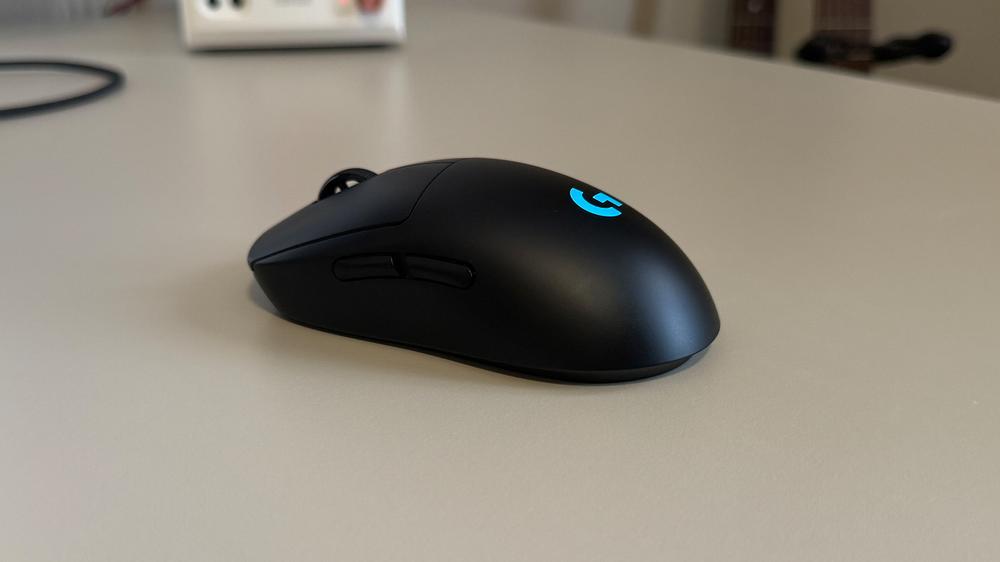Logitech’s G Pro lineup has defined competitive gaming mice since the first model arrived in 2016. Trusted by pros and streamers alike, the lineup has earned its place on desks around the world. The new G Pro 2 Lightspeed carries that legacy forward, taking a different path from Logitech’s ultralight standout, the G Pro X Superlight 2.
Where the Superlight pushed weight reduction to the extreme, the G Pro 2 settles at 80 grams. That makes it heavier than most esports-focused mice, but after weeks of testing across titles like Marvel Rivals and Battlefield 6, its weight felt deliberate rather than sluggish.
Key Specs
- Weight: 80g
- Connectivity: USB-C, 2.4GHz Lightspeed
- Grip Type: Palm, Claw, Fingertip
- Buttons: 4-8
- Sensor: HERO 2
- Maximum DPI: 44,000
- Polling Rate: 1000Hz
- Battery Life: 95 hours (60 with RGB enabled)
- Price: $149.99
Design & Features
The G Pro 2 Lightspeed doesn’t reinvent Logitech’s formula. It’s simple, ambidextrous design will feel instantly familiar to anyone who has used a Pro series mouse. At just under five inches in length, it suits most grip styles, though players with smaller hands may find it less comfortable.
As one of the few ambidextrous gaming mice on the market, Logitech includes swappable side buttons for both left and right configurations. Out of the box, the left-side buttons are installed, but the extra set comes included along with the wireless dongle and charging cable.
The larger frame makes the G Pro 2 Lightspeed a comfortable fit for bigger hands, avoiding the cramping that can come with smaller mice during long sessions. And even right-handed players can have some fun with the optional right-side buttons.
In testing with Battlefield 6, I mapped one of those buttons to lower DPI while sniping, making fine adjustments easier. The placement proved less practical for regular use, so I ultimately removed it, but this flexibility is still a bonus to have.
The HERO 2 sensor delivers accurate tracking across its full sensitivity range, with no noticeable stutter or latency. While the 1000Hz polling rate isn’t as high as newer 2000Hz and 4000Hz options from competitors, it performed consistently in testing.
A single illuminated G logo serves as the only RGB element. Logitech G’s minimalist branding has become a staple in the industry, and it doesn’t rely on a ton of fancy lighting to stand out. It’s going to be hidden under your hand for most of its life, so why bother?
With lighting enabled, battery life averages around 60 hours; with it off, roughly 95. In mixed use – work during the week, gaming on weekends – charging was only needed about once every two weeks.
Software
Like all of Logitech’s modern peripherals, the mouse is supported by G Hub software. The suite offers quick access to DPI tuning, button remapping, and lighting control. While it still carries a few quirks, G Hub handled all core adjustments reliably during testing.
Logitech could consider a web-based configuration setup. A ton of smaller brands have replaced the standalone software that takes up system resources with a simple website, accessible from any computer you plug the peripheral into, and it’s generally a much better experience overall.
Verdict
The Logitech G Pro 2 Lightspeed is a strong option for players who want a balanced esports mouse without chasing ultralight weight. At 80 grams, it never feels sluggish, and the comfortable shape works across grip styles. Its ambidextrous design also makes it one of the few high-end options available for left-handed players.
That said, the overall design remains nearly identical to Logitech’s previous Pro models, which may leave some users wanting more variety. For $149.99, it’s a reliable choice in competitive gaming hardware, even if it doesn’t deliver major surprises.

 A Knight of the Seven Kingdoms Showrunner Explains the Big Difference With Game of Thrones That Fans Will Instantly Notice
A Knight of the Seven Kingdoms Showrunner Explains the Big Difference With Game of Thrones That Fans Will Instantly Notice